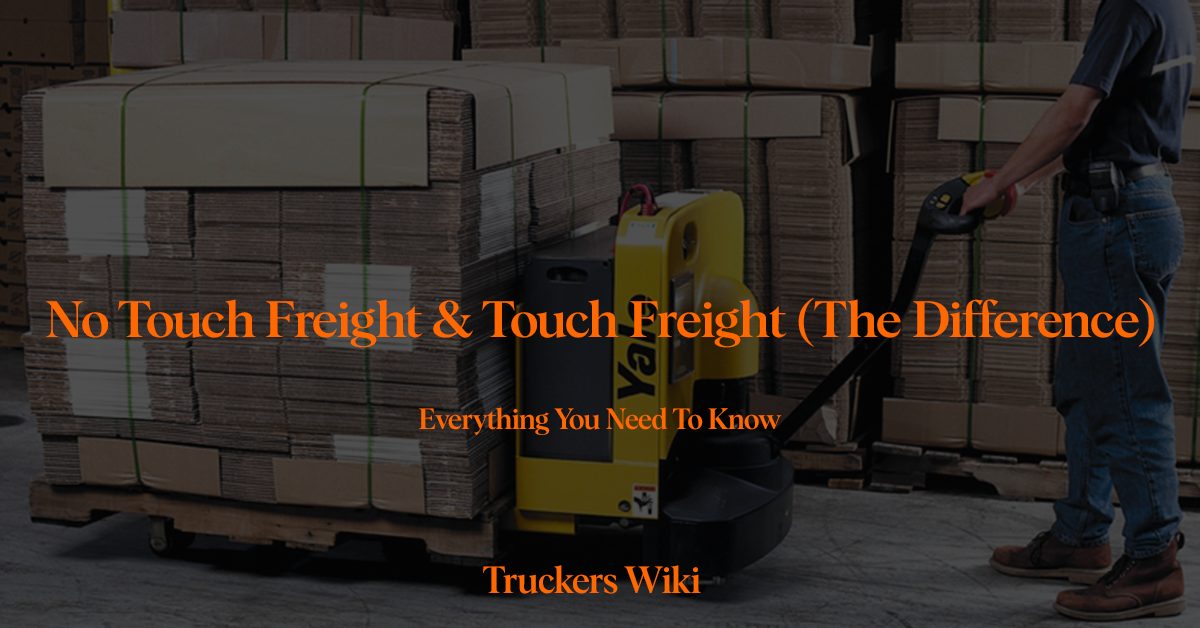
Table of Contents
What is the Difference Between Touch Freight and No Touch Freight in Trucking
Touch freight requires driver to physically handle or assist in the loading and unloading process while no-touch freight means driver is not responsible for loading or unloading.
This is a phrase you will often read in job adverts and a common question you will get as a recruiter.
What is No Touch Freight in Trucking
No-touch freight in the trucking industry refers to cargo that a driver is not responsible for loading, unloading, or handling during the transportation process. When a load is designated as “no-touch,” it means that the driver’s primary responsibility is to drive the truck and ensure the safe transportation of the goods, while the loading and unloading tasks are handled by others.
This concept is particularly beneficial for drivers who aim to minimize the physical labor associated with loading and unloading cargo. It allows drivers to focus on driving, adhering to regulations, and ensuring timely and safe deliveries without the additional time and effort required for manual cargo handling.
“No-touch freight” can include various types of shipments, such as pre-loaded trailers, containers, or palletized goods. It’s common in industries where shipping and receiving operations are well-established and efficient, such as large distribution centers, warehouses, or manufacturing facilities. This arrangement can also contribute to reducing the risk of cargo damage during transportation, as fewer hands are involved in the loading and unloading process.
What is Touch Freight in Trucking
Touch freight in the trucking industry refers to cargo that requires the driver to physically handle or assist in loading and unloading during the transportation process. When a load is designated as “touch freight,” the driver is responsible not only for driving the truck but also for tasks related to the loading and unloading of the cargo.
Tasks associated with touch freight may include:
- Loading: Physically loading the cargo onto the truck, which can involve lifting, stacking, and securing items.
- Unloading: Safely removing the cargo from the truck, ensuring that it is delivered intact and undamaged.
- Securing: Properly securing the cargo to prevent shifting, damage, or accidents during transit.
- Documenting: Keeping track of the loaded items, their condition, and any necessary paperwork.
Touch freight is more common in industries where specialized handling is required, such as construction materials, heavy equipment, bulk goods, or certain perishable items. While touch freight assignments may involve additional physical labor and time, they can also offer opportunities for interaction with customers and provide a greater sense of involvement in the entire transportation process.
Drivers usually use Pallet Jack to load/unload the freight and liftgate when required.
Are Drivers Paid for Touch Freight
Whether drivers are paid for touch freight depends on the carrier’s policies, the specific terms of the driver’s contract or agreement, and industry norms.
Here are some factors to consider:
1. Carrier Policies: Some carriers include compensation for touch freight as part of their pay structure. They may offer higher pay for loads that involve physical loading, unloading, or handling of cargo.
2. Contractual Agreements: Drivers’ contracts or agreements with carriers may outline whether touch freight is compensated and at what rate. It’s important for drivers to review their contracts to understand the terms.
3. Hourly vs. Mileage Pay: Drivers who are paid by the hour might receive additional compensation for touch freight, as it involves extra time and physical effort. Drivers paid by mileage might negotiate touch freight compensation separately.
4. Industry Norms: Compensation for touch freight can vary widely within the industry. Some carriers may have standard practices, while others might negotiate compensation on a case-by-case basis.
5. Additional Services: Compensation for touch freight might also depend on the level of services provided. For example, handling hazardous materials or delicate items might warrant higher compensation.
6. Unloading Fees: In some cases, drivers might receive fees or bonuses directly from the shipper or receiver for unloading the cargo, especially if it’s time-sensitive.
Audio Article Load Confirmation Rate Confirmation Who is the
Last modified: August 26, 2023

